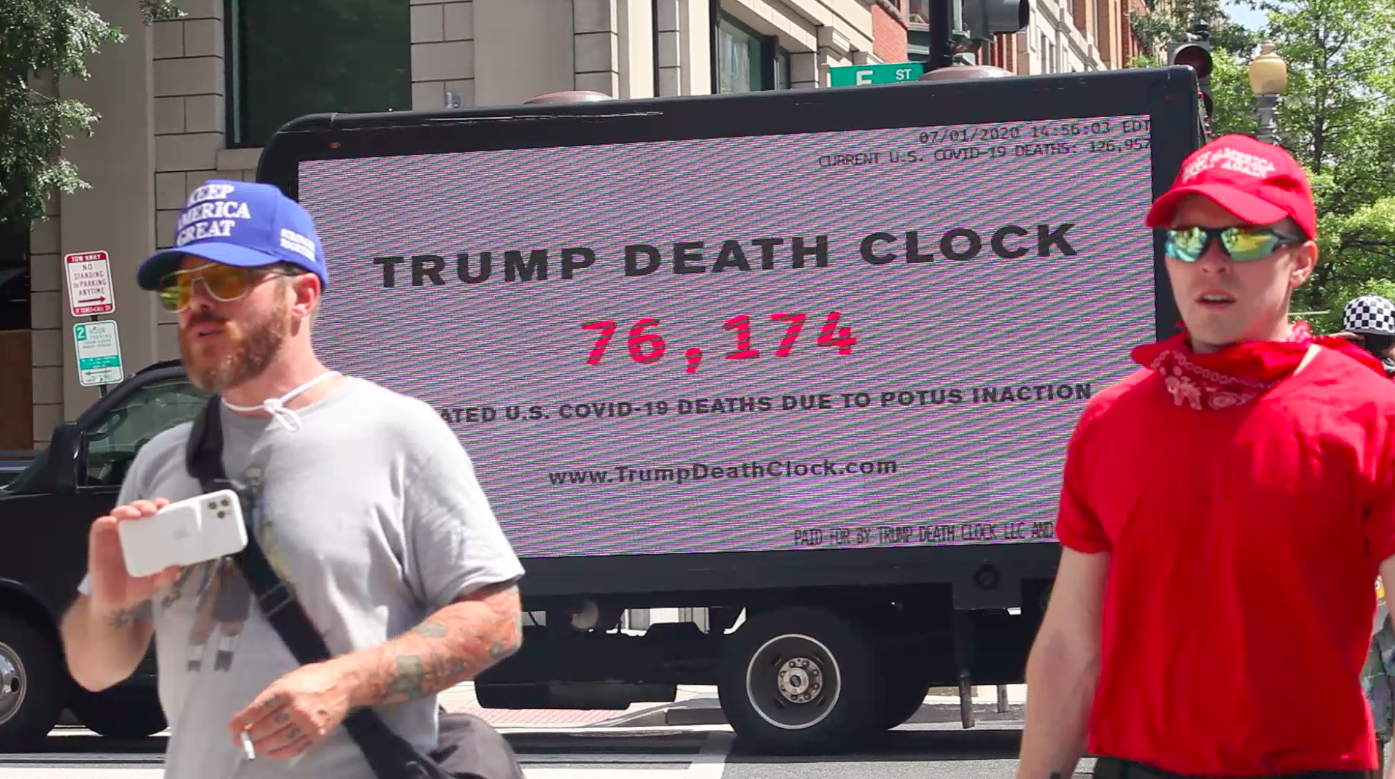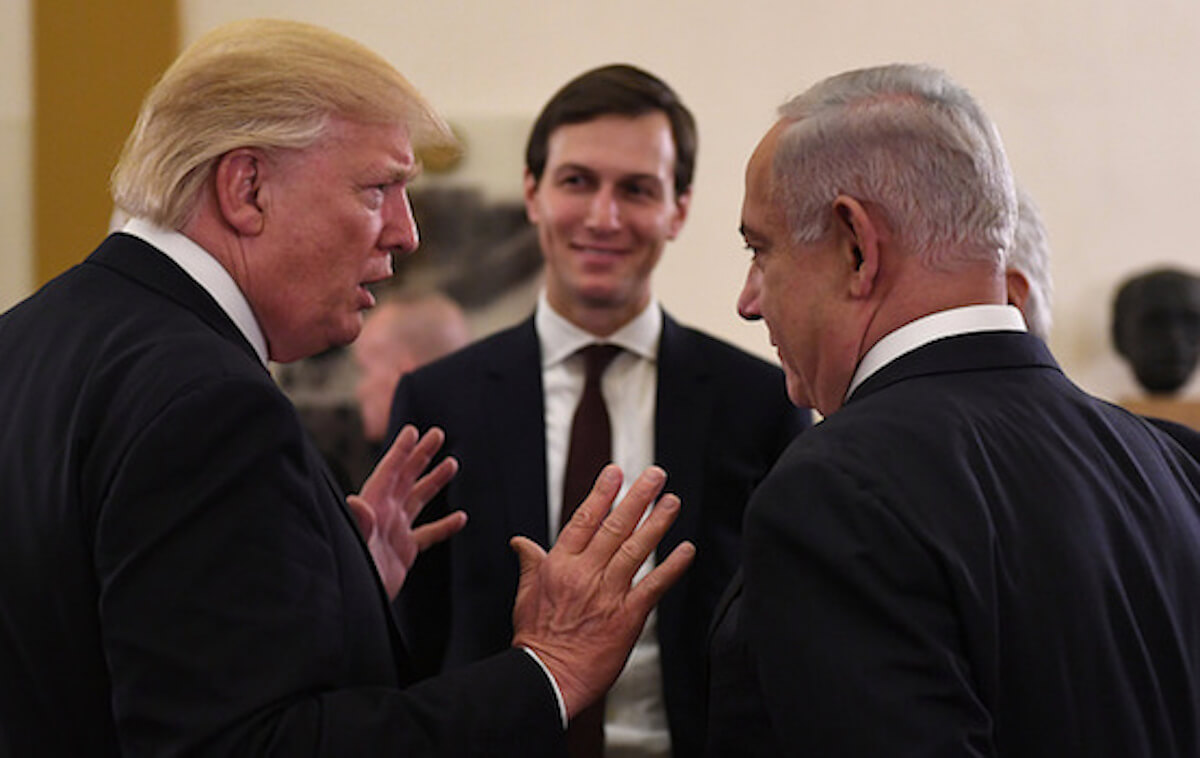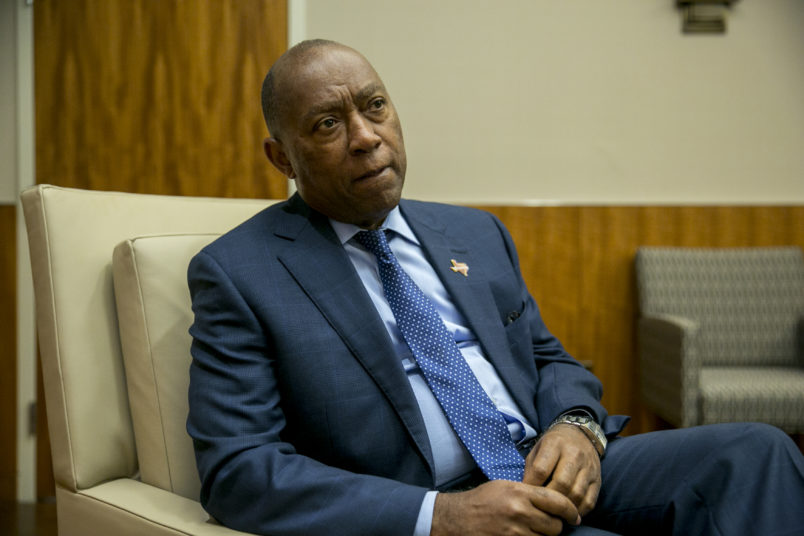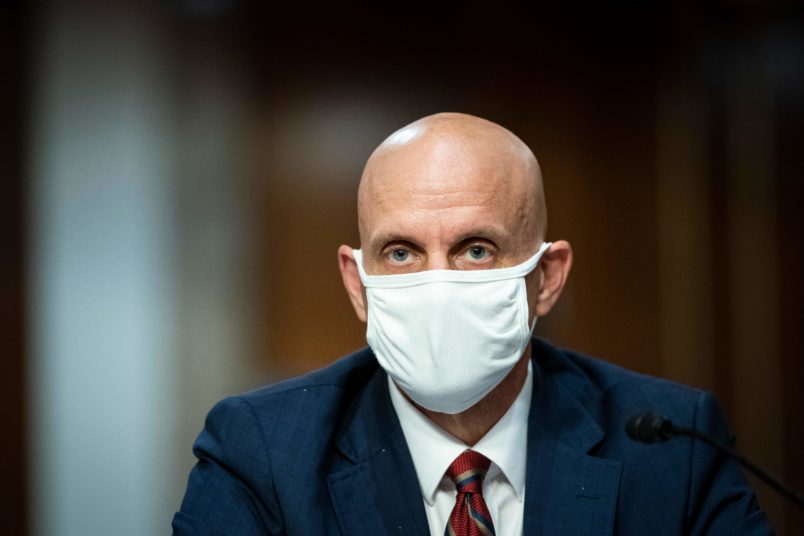ELLY BELLE UPDATED 6 JULY 2020,
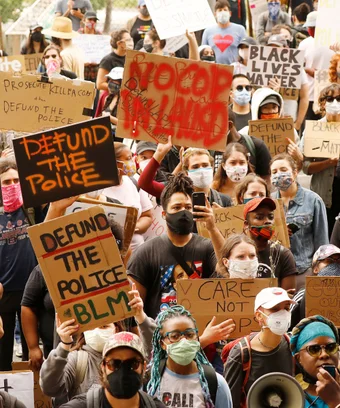
PHOTO: AL SEIB/LOS ANGELES TIMES/SHUTTERSTOCK.
It's been over a month since Black Lives Matter protests started after the police killed George Floyd in May. Since then, protesters in Minneapolis were able to push the city council to disband the police department and begin to reimagine what their security systems will look like. But the protests — and the actions that have come out of them — are not isolated to the city where George Floyd was suffocated and killed: Across America, protesters have continued to demand that officials defund and abolish police forces and change the country's systemised racism altogether.
But one month of civil unrest later and it doesn't seem that the movement to take action is slowing down by any means. On Monday 29th June, Democrats in Congress proposed legislation that aims to end excessive use of force by police, and get rid of protections that shield police officers who are accused of misconduct from being prosecuted.
While laws that protect police officers have already been undone in places like New York, a federal law would be an expansive intervention in the way policing works across the country. In cities like Portland and Minneapolis, student-led campaigns have pushed public school boards to cut ties with the police and take officers out of schools. For Portland schools, that means freeing up $1 million (£850,000) to be used on much-needed social services and more.
Despite individual wins and federal policy proposals, protesters and organisers in most cities are still fighting for officials to take real action around the main demand from protesters: defunding police departments and reallocating the funds to underfunded services like education and housing.
In Seattle, New York, Baltimore, Portland, and elsewhere, budgets remain in the high millions and billions even after cuts that might seem substantial at first glance. In Seattle, for example, protesters rejected a recent proposal by Mayor Jenny Durkan to cut the police budget by $20 million, which would only be a 5% reduction in funding. And in Los Angeles, council members approved a budget cut of $150 million to LAPD's $1 billion (£800m), still a small slash.
Advocates are also asking for real change, rather than symbolic gestures. While officials like DC Mayor Muriel Bowser and New York City Mayor Bill de Blasio have named plazas in honour of Black Lives Matter and had “BLACK LIVES MATTER” murals and words painted on streets, activists have said and shown that they want much more than PR stunts that don’t provide any material change. Still, the ever-growing size of the movement has continued to ignite people's passion to keep protesting and organising for real justice.
ADVERTISEMENT
Most recently, protests have taken the form of staged sit-ins at government buildings in response to moves for reforms and adjusted budgets rather than defunding plans. In New York, protesters have camped out at City Hall, waging Occupy City Hall for more than a week, in an attempt to pressure de Blasio and other officials in charge of the budget to cut NYPD funds by at least $1 billion (£850m), and reallocate it to social services.
On top of cutting the police budget, the #DefundNYPD campaign also demanded the city not increase NYPD budget lines in 2021, that no new policing-related initiatives are created, and more budget transparency. On the day of the budget vote, June 30, those occupying City Hall in Manhattan stayed the whole night watching the budget meeting from screens outside, with many disappointed in the budget outcome that failed to cut the $1 billion (£850m) demanded, provided $13 million to the NYPD (£10m) for "Special Expense," and further defunded necessary services like healthcare, affordable housing, and more.
"The City Council failed New Yorkers today. Instead of shrinking policing, the Council moved cops from the NYPD to other agencies, refused to institute a hiring freeze on police and failed to take meaningful steps to shrink the NYPD’s massive and abusive presence in our communities," Communities United for Police Reform said in a statement released on 1st July after the budget vote. "We will continue to fight for true justice for our communities, and for a budget that provides New Yorkers with the resources and services that we deserve.”
In Philadelphia, protesters have similarly asked city officials to reallocate police budgets into community services, homeless services, and libraries by holding a sit-in at the Municipal Services Building. This came as a last-ditch effort after weeks of protests achieved only a 4.3% reduction in the Philadelphia Police Department’s proposed 2021 budget.
Philadelphia has already proposed cutting the city's $19 million (£15.2m) increase to the police budget to $14 million (£11.2m). But according to Flan Park, an organiser in Philadelphia, this falls far short of what organisers demanded. Park said that allies called for at minimum, a $120 million (£96m) reduction to PPD — an amount equivalent to the total increase to police operating budgets since the current mayor began his first term in office, while other coalition organisations called for things like a 50% reduction and immediate abolition of the police department.
“Groups like Philly for Real Justice, Black Lives Matter Philly, and Black and Brown Workers Cooperative have been organising around the connections between police brutality and economic injustice toward Black Philadelphians for years before this summer," Flan says. "Their leadership has been pushing these issues for a long time. I don’t think that even a flat or no increase budget for the PPD would have happened this summer without years of groundwork coming to fruition as people rapidly mobilised. But this fight far from finished.”
The protests and demands won’t be dying down anytime soon. Over the last month, there have been protests in every state in America, with protests in major cities spanning Seattle to New York continuing each day since May 29. What started as individual protests to call for justice for those killed by police — including George Floyd, Tony McDade, and Breonna Taylor — has quickly shifted into a nationwide movement to fundamentally end policing and transform communities.
Kandace Montgomery, an organiser with MPD150 in Minneapolis, who has been pushing to defund the police for years, told the Minneapolis Star Tribune that this moment feels different from the early days of Black Lives Matter, as more people are joining the cause. “Folks in a very decentralised way are mobilising to the streets to demand justice. Organisers have been clear on this forever, but the general public is more clear that we need to eradicate systemic racism and abolish the police, and that is what feels different now.”
Despite individual wins and federal policy proposals, protesters and organisers in most cities are still fighting for officials to take real action around the main demand from protesters: defunding police departments and reallocating the funds to underfunded services like education and housing.
In Seattle, New York, Baltimore, Portland, and elsewhere, budgets remain in the high millions and billions even after cuts that might seem substantial at first glance. In Seattle, for example, protesters rejected a recent proposal by Mayor Jenny Durkan to cut the police budget by $20 million, which would only be a 5% reduction in funding. And in Los Angeles, council members approved a budget cut of $150 million to LAPD's $1 billion (£800m), still a small slash.
Advocates are also asking for real change, rather than symbolic gestures. While officials like DC Mayor Muriel Bowser and New York City Mayor Bill de Blasio have named plazas in honour of Black Lives Matter and had “BLACK LIVES MATTER” murals and words painted on streets, activists have said and shown that they want much more than PR stunts that don’t provide any material change. Still, the ever-growing size of the movement has continued to ignite people's passion to keep protesting and organising for real justice.
ADVERTISEMENT
Most recently, protests have taken the form of staged sit-ins at government buildings in response to moves for reforms and adjusted budgets rather than defunding plans. In New York, protesters have camped out at City Hall, waging Occupy City Hall for more than a week, in an attempt to pressure de Blasio and other officials in charge of the budget to cut NYPD funds by at least $1 billion (£850m), and reallocate it to social services.
On top of cutting the police budget, the #DefundNYPD campaign also demanded the city not increase NYPD budget lines in 2021, that no new policing-related initiatives are created, and more budget transparency. On the day of the budget vote, June 30, those occupying City Hall in Manhattan stayed the whole night watching the budget meeting from screens outside, with many disappointed in the budget outcome that failed to cut the $1 billion (£850m) demanded, provided $13 million to the NYPD (£10m) for "Special Expense," and further defunded necessary services like healthcare, affordable housing, and more.
"The City Council failed New Yorkers today. Instead of shrinking policing, the Council moved cops from the NYPD to other agencies, refused to institute a hiring freeze on police and failed to take meaningful steps to shrink the NYPD’s massive and abusive presence in our communities," Communities United for Police Reform said in a statement released on 1st July after the budget vote. "We will continue to fight for true justice for our communities, and for a budget that provides New Yorkers with the resources and services that we deserve.”
In Philadelphia, protesters have similarly asked city officials to reallocate police budgets into community services, homeless services, and libraries by holding a sit-in at the Municipal Services Building. This came as a last-ditch effort after weeks of protests achieved only a 4.3% reduction in the Philadelphia Police Department’s proposed 2021 budget.
Philadelphia has already proposed cutting the city's $19 million (£15.2m) increase to the police budget to $14 million (£11.2m). But according to Flan Park, an organiser in Philadelphia, this falls far short of what organisers demanded. Park said that allies called for at minimum, a $120 million (£96m) reduction to PPD — an amount equivalent to the total increase to police operating budgets since the current mayor began his first term in office, while other coalition organisations called for things like a 50% reduction and immediate abolition of the police department.
“Groups like Philly for Real Justice, Black Lives Matter Philly, and Black and Brown Workers Cooperative have been organising around the connections between police brutality and economic injustice toward Black Philadelphians for years before this summer," Flan says. "Their leadership has been pushing these issues for a long time. I don’t think that even a flat or no increase budget for the PPD would have happened this summer without years of groundwork coming to fruition as people rapidly mobilised. But this fight far from finished.”
The protests and demands won’t be dying down anytime soon. Over the last month, there have been protests in every state in America, with protests in major cities spanning Seattle to New York continuing each day since May 29. What started as individual protests to call for justice for those killed by police — including George Floyd, Tony McDade, and Breonna Taylor — has quickly shifted into a nationwide movement to fundamentally end policing and transform communities.
Kandace Montgomery, an organiser with MPD150 in Minneapolis, who has been pushing to defund the police for years, told the Minneapolis Star Tribune that this moment feels different from the early days of Black Lives Matter, as more people are joining the cause. “Folks in a very decentralised way are mobilising to the streets to demand justice. Organisers have been clear on this forever, but the general public is more clear that we need to eradicate systemic racism and abolish the police, and that is what feels different now.”
/cdn.vox-cdn.com/uploads/chorus_image/image/67009376/1169909756.jpg.0.jpg)



